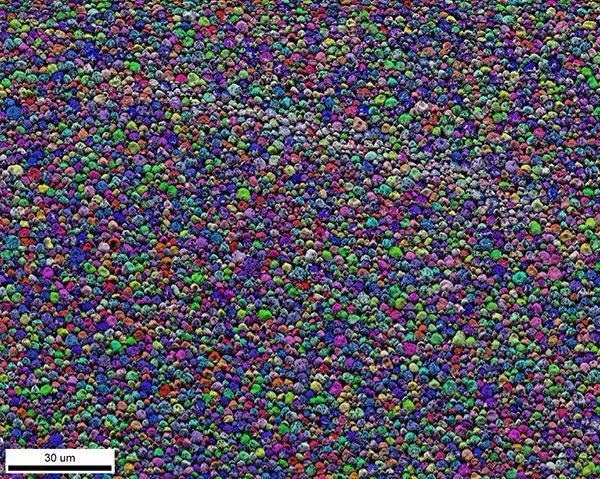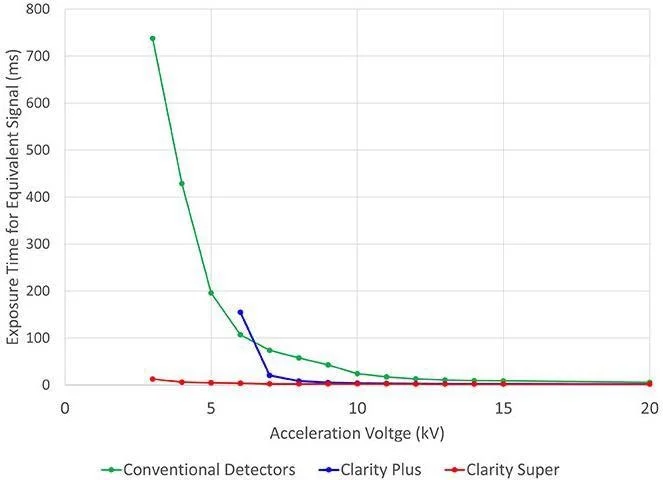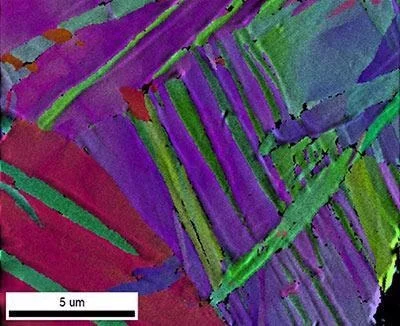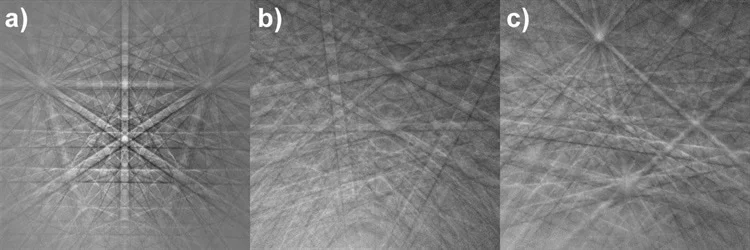The EDAX Clarity is the world's first direct electron backscatter diffraction (EBSD) detector available for commercial use, delivering unparalleled performance down to 3 kV.
This system is ideal for the examination of challenging materials such as ceramics, beam-sensitive perovskites, and semiconductors, which traditional EBSD systems struggle to analyze.
This innovative series utilizes single-electron detection to provide high-fidelity EBSD pattern quality and unmatched sensitivity, empowering users to advance their research with precision and confidence.
- Clarity Plus — Effective collection down to voltages of ~7 kV
- Clarity Super — Crafted for extraordinary performance at low voltages down to 3 kV
Clarity utilizes an advanced hybrid-pixel direct detection system with single-electron detection sensitivity.
When incident electrons collide, they generate multiple electron-hole pairs within the silicon. A bias voltage then directs the charge toward the underlying CMOS detector, where each event is counted. This technology allows for the detection of individual electrons, a capability not achievable with traditional EBSD detectors that rely on light transfer devices or phosphor screens.

EBSD image quality and IPF orientation map from beam-sensitive MAPI perovskites collected at 10 kV and 150 pA beam dose. Image Credit: Gatan
Thanks to its zero read noise, Clarity delivers unparalleled image quality and sensitivity. It can detect and analyze patterns with fewer than 10 e-/pixel. Clarity is an excellent choice for beam-sensitive samples and applications with low beam requirements, such as hybrid organic-inorganic perovskite solar cells and ceramics.
The Clarity Super is also well-suited for lower kV acquisition, enhancing spatial resolution for fine-grained materials.

Sensitivity comparison of Clarity with conventional phosphor-based detectors. Image Credit: Gatan
Features and benefits
Beam sensitive materials analysis
- Examining non-conductive materials like ceramics, which tend to charge under standard beam currents, is possible without requiring low-vacuum SEM settings or conductive coatings.
- The system obtains high-quality EBSD patterns and maps even at low beam currents, facilitating the study of grain boundaries, grain size, and crystal orientation in detail.
- Operating at low beam currents and energies, the system reveals previously unseen structures while effectively preventing any potential damage.

EBSD Image Quality and IPF orientation map from cryo-forged nanotwinned titanium collected at 7 kV and 200 pA beam dose for improved spatial resolution. Image Credit: Gatan
Traditional materials
- Exceptionally clear EBSD patterns can be obtained without optical or phosphor lenses.
- Improved spatial resolution is achieved at lower acceleration voltages.
- High-dynamic-range imaging is employed to attain outstanding EBSD pattern quality.
Conclusion
The Clarity EBSD Detector Series provides unparalleled sensitivity and pattern quality for EBSD pattern collection and mapping. It enables the examination of beam-sensitive materials and delivers quantifiable data on electron intensities across the broadest spectrum of beam energies.

High-quality EBSD patterns collected with Clarity from a) silicon, b) olivine, and c) quartz. Image Credit: Gatan
